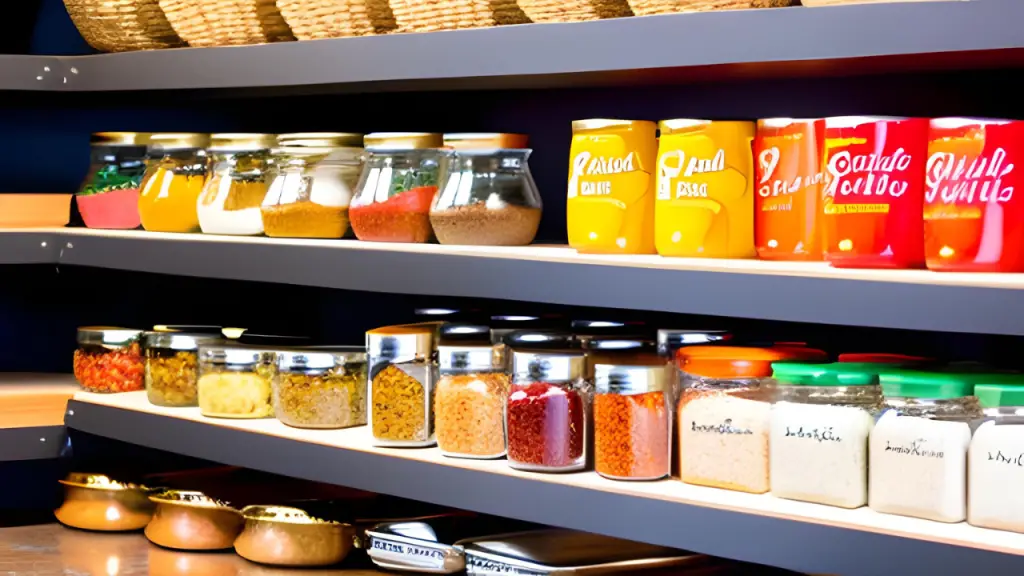
It takes a full-time job to be a busy mom. When juggling a job, home duties, and childcare, planning and cooking nutritious meals for your family can be difficult. However, you must keep a nutritious diet to ensure your family members remain healthy and content.
Stocking up on Low-Sodium Pantry Must-Haves for Busy Moms is one of the simplest ways to start eating better. You can easily prepare great dinners with these ingredients even on the busiest days. This post will cover 30 low-sodium pantry essentials for working moms to make eating well simple.
The Importance of a Low-Sodium Diet
Our bodies require sodium as a necessary nutrient to operate effectively. Yet, a high salt diet can result in hypertension, heart disease, and other health issues. In addition, moms who are constantly on the move may depend on processed foods and fast food, which are frequently high in salt.
Choose pantry items with minimal sodium content to lower your family’s overall salt intake and improve their health. Low-sodium meals are a good source of important nutrients and can help you and your family stay energized all day.
30 Low-Sodium Pantry Must-Haves for Busy Moms
Here is the list of 30 low-sodium pantry must-have items:
- Brown Rice
- Quinoa
- Whole Wheat Pasta
- Oats
- Canned Tomatoes
- Canned Beans
- Nut Butter
- Olive Oil
- Vinegar (Balsamic, Apple Cider, Red Wine, White Wine)
- Spices (Cumin, Paprika, Garlic Powder, Onion Powder, Chili Powder)
- Herbs (Oregano, Thyme, Rosemary, Basil, Parsley)
- Low-Sodium Broth
- Canned Tuna
- Canned Salmon
- Canned Chicken Breast
- Nuts (Almonds, Walnuts, Pistachios)
- Seeds (Chia Seeds, Flax Seeds, Sunflower Seeds)
- Dried Fruit (Raisins, Cranberries, Apricots)
- Nutritional Yeast
- Coconut Milk
- Whole Grain Crackers
- Popcorn
- Corn Tortillas
- Whole Wheat Flour
- Baking Powder
- Baking Soda
- Unsweetened Cocoa Powder
- Honey
- Maple Syrup
- Unsweetened Applesauce
Tips for Making Healthy Meals with Low-Sodium Pantry Staples
- Use different herbs and spices to give your food flavor without using salt.
- Replace manufactured snacks with healthy foods like dried fruit, nuts, and seeds.
- As a foundation for soups and stews, use low-sodium broth.
- Use vinegar, olive oil, and spices to create your dressings and marinades.
- When buying crackers, rice, and pasta, choose whole-grain varieties.
- Use canned chicken and fish as a quick and simple source of protein.
- Reduce the amount of added sugar in your baking by using unsweetened applesauce.
Frequently asked questions on this topic!
What is considered a low-sodium diet?
A conventional low-sodium diet calls for ingesting no more than 2,300 milligrams of salt daily, while some medical professionals advise even lower intake amounts for specific people.
Why is reducing sodium intake important?
This is because it will help reduce blood pressure, reduce the risk of heart disease, and improve general health can all be achieved by reducing salt intake.
Can I still eat flavorful meals on a low-sodium diet?
Yes, On a low-sodium diet, you may still have gourmet meals by flavoring your food with herbs, spices, and other ingredients.
Are there any health risks associated with a low-sodium diet?
In rare instances, eating too little salt can result in health issues like low blood pressure, headaches, and muscle cramping. Therefore, it’s crucial to see a healthcare professional assess your specific needs-based salt consumption.
Can I still eat canned foods on a low-sodium diet?
Yes, consuming canned goods while adhering to a low-sodium diet is still possible. Just be sure to choose products marked as “low-sodium” or “no salt added.”
Are there any specific foods that are high in sodium that I should avoid?
Foods high in sodium include canned soups, processed meats, and packaged snacks. Therefore, it’s crucial to read food labels and select low-sodium products carefully.
Can a low-sodium diet help with weight loss?
Although cutting back on salt alone may not result in weight reduction, it may be a part of a healthy diet and lifestyle that supports weight loss.
How can I transition to a low-sodium diet?
Focus on adding more complete, unadulterated foods to your diet while gradually lowering your salt intake.
Can I eat out on a low-sodium diet?
Sure, you can dine out while following a low-sodium diet, but it could take some preparation and research. Ask the waitress for advice or look for eateries that have low-sodium alternatives.
What are some benefits of a low-sodium diet?
It helps reduce the risk of heart disease, lower blood pressure, and increase general health and well-being, a few advantages of a low-sodium diet.
Conclusion
Start Building Your Low-Sodium Pantry Today
It might be difficult for you as a busy mom to maintain a nutritious diet, but it’s crucial for your family’s general health and happiness. You can easily make quick and simple, delicious, and nutrient-dense meals by stocking up on low-sodium pantry essentials. There are several low-sodium choices available which will allow you to satisfy your family’s nutritional needs without compromising flavor, like canned beans and quinoa.
Always check the labels on low-sodium pantry essentials before purchasing them. Seek for products devoid of added sugars and preservatives and low in sodium. Feel free to experiment with new recipes and taste combinations, and think about buying in bulk to save money and reduce waste.
Even on the busiest days, you can prioritize healthy nutrition for your family with a little planning. So create your low-sodium pantry to start reaping the rewards of a healthy lifestyle.
